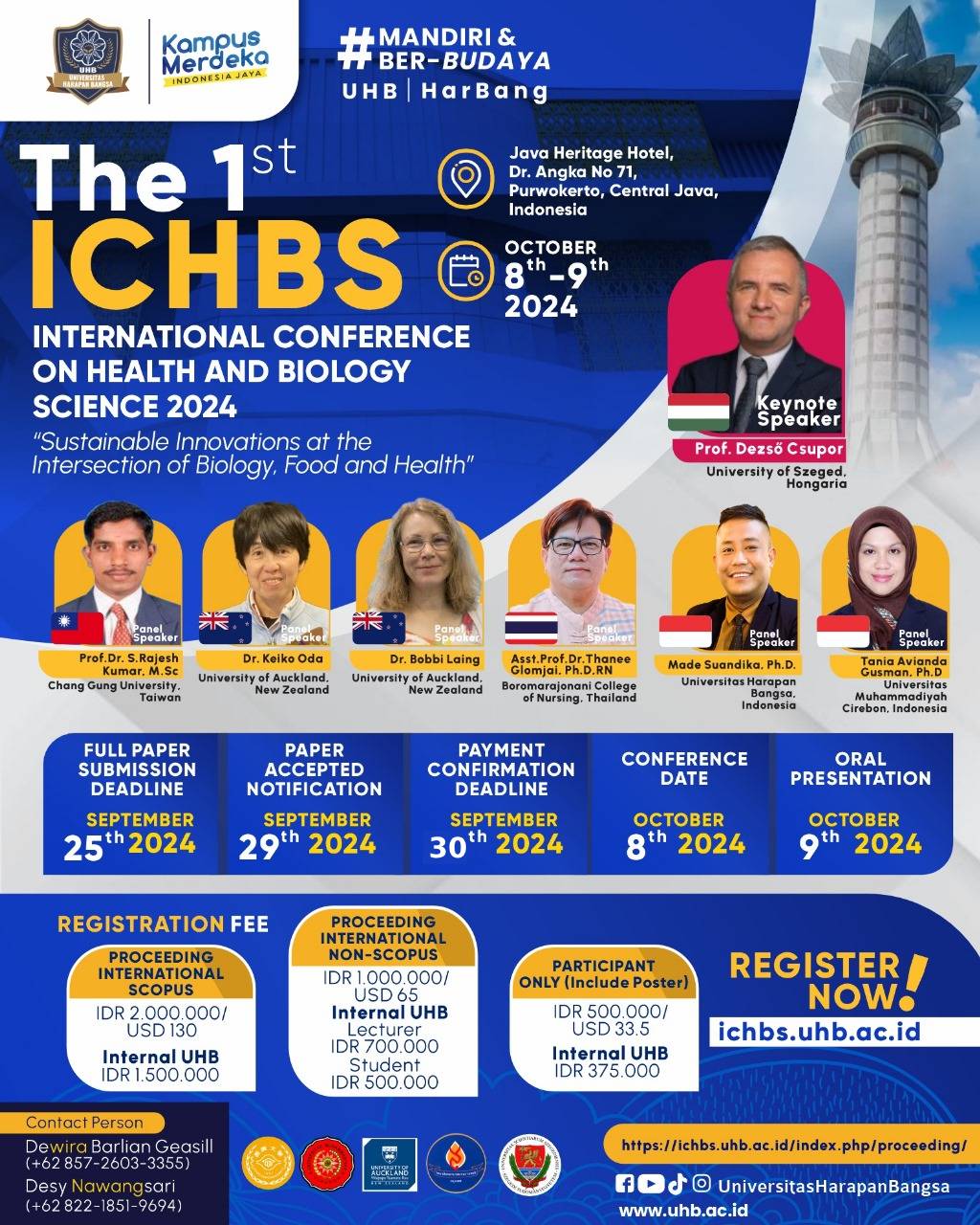Exploratory study of the implementation of the stunting prevention program as a basis for developing the “genting” prevention of stunting in adolescent program in gunungkidul Yogyakarta
Keywords:
stunting prevention, community-based intervention, adolescent empowermentAbstract
Poor nutritional status among adolescents is an important factor that determines poor health outcomes. If the nutritional needs of adolescent female are not met, they are at high risk of death due to pregnancy and childbirth and are more likely to give birth to babies with low birth weight. There is a need for good nutritional knowledge about stunting and its prevention in adolescents as one way to reduce stunting rates in the future. This study was conducted as a basis for developing a community-based stunting prevention program called "GENTING" (Gerakan Enyahkan Stunting) as an effort to prevent stunting in adolescents. The study was conducted using a qualitative method with a phenomenological approach. This study was conducted in Gunungkidul Regency, Yogyakarta. The sample in this study were adolescent female aged 13-15 years. Participants in the study were selected by purposive sampling, with the following criteria: adolescent female aged 13-15 years and adolescents who actively use social media. Data collection was carried out through in-depth interviews and Focus Group Discussions (FGD), after that, the interview and FGD recordings were transcribed and then codes and categories were identified. The results of the study showed that stunting prevention programs were not routinely carried out in schools. The program was only carried out when health workers needed data for their screening or research. The counseling that was conducted was not followed up with follow-up, thus creating a negative impression of the program. Interactive and technology-based approaches are very relevant for adolescence who tend to be more familiar with digital devices. Interactive programs such as using audiovisual media that are distributed through social media are more attractive to adolescence
References
1. Adolphus, K., Lawton, C. L., Champ, C. L., & Dye, L. (2016). The effects of breakfast and breakfast composition on cognition in children and adolescents: A systematic review. Advances in Nutrition, 7(3), 590S-612S. https://doi.org/10.3945/an.115.010256
2. Akbar, I., & Huriah, T. (2022). Community-based intervention for the prevention of stunting in children age 6-59 months. International Journal of Health Sciences, 6642–6652. https://doi.org/10.53730/ijhs.v6ns1.6418
3. Al-Ansi, A. M., Hazaimeh, M., Hendi, A., AL-hrinat, J., & Adwan, G. (2023). How do social media influencers change adolescents’ behavior ? An evidence from Middle East Countries. Heliyon, 9(5), e15983. https://doi.org/10.1016/j.heliyon.2023.e15983
4. Alatorre, S., Schwarz, A. G., Egan, K. A., Feldman, A. R., Rosa, M., & Wang, M. L. (2023). Exploring Social Media Preferences for Healthy Weight Management Interventions Among Adolescents of Color: Mixed Methods Study. JMIR Pediatrics and Parenting, 6, e43961. https://doi.org/10.2196/43961
5. Atho’illah, M. A. I., & Nadhiroh, S. R. (2023). Pemberdayaan Masyarakat dalam Pencegahahan Stunting di Desa Sarirejo Kecamatan Balen Kabupaten Bojonegoro. Media GIzi Kesmas, 12(1), 241–249. https://doi.org/10.20473/mgk.v12i1.2023.241-249
6. Badan Pusat Statistik Indonesia. (2023). Catalog : 1101001. Statistik Indonesia 2023, 1101001, 790. https://www.bps.go.id/publication/2020/04/29/e9011b3155d45d70823c141f/stati
7. Buda, G., Lukoševičiūtė, J., Šalčiūnaitė, L., & Šmigelskas, K. (2021). Possible Effects of Social Media Use on Adolescent Health Behaviors and Perceptions. Psychological Reports, 124(3), 1031–1048. https://doi.org/10.1177/0033294120922481
8. Freeman, J. L., Caldwell, P. H. Y., & Scott, K. M. (2023). How Adolescents Trust Health Information on Social Media: A Systematic Review. Academic Pediatrics, 23(4), 703–719. https://doi.org/10.1016/j.acap.2022.12.011
9. Handayani, B., & Ariyanto, B. (2023). Media Sosial Dan Kampanye Pencegahan Stunting. In Journal of Humanity Studies (Vol. 2, Issue 1). https://ejournal.upgrisba.ac.id/index.php/jhs/index
10. Jeong, E. Y. (2019). The influence of breakfast on the academic performance of school-age adolescents: Systematic review*. In Journal of Nutrition and Health (Vol. 52, Issue 2, pp. 119–128). Korean Nutrition Society. https://doi.org/10.4163/jnh.2019.52.2.119
11. Kemenkes RI. (2018). Hasil Riset Kesehatan Dasar Tahun 2018. Kementrian Kesehatan RI, 53(9), 1689–1699.
12. Kemenkes RI. (2020). Gizi saat Remaja Tentukan Kualitas Keturunan. In Kementerian Kesehatan RI. https://www.kemkes.go.id/article/view/20012600004/gizi-saat-remaja-tentukan-kualitas-keturunan.html
13. Kemenkes RI. (2022). Kemenkes RI no HK.01.07/MENKES/1928/2022 Tentang Pedoman Nasional Pelayanan Kedokteran Tata Laksana Stunting. 1–52.
14. Kemenkes. (2023). Hasil Survei Status Gizi Indonesia (SSGI) 2022. Kemenkes, 1–7.
15. Kementerian Kesehatan RI. (2020). Indikator Program Kesehatan Masyarakat dalam RPJMN dan Rentra Kementerian Kesehatan 2020-2024. Katalog Dalam Terbitan. Kementerian Kesehatan RI, 1–99. https://kesmas.kemkes.go.id/assets/uploads/contents/attachments/ef5bb48f4aaae60ebb724caf1c534a24.pdf
16. Marlinawati, D. A., Rahfiludin, M. Z., & Mustofa, S. B. (2023a). Effectiveness of Media-Based Health Education on Stunting Prevention in Adolescents: A Systematic Review. AgriHealth: Journal of Agri-Food, Nutrition and Public Health, 4(2), 102. https://doi.org/10.20961/agrihealth.v4i2.71357
17. Marlinawati, D. A., Rahfiludin, M. Z., & Mustofa, S. B. (2023b). Effectiveness of Media-Based Health Education on Stunting Prevention in Adolescents: A Systematic Review. AgriHealth: Journal of Agri-Food, Nutrition and Public Health, 4(2), 102. https://doi.org/10.20961/agrihealth.v4i2.71357
18. Montgomery, S. C., Donnelly, M., Bhatnagar, P., Carlin, A., Kee, F., & Hunter, R. F. (2020). Peer social network processes and adolescent health behaviors: A systematic review. Preventive Medicine, 130, 105900. https://doi.org/10.1016/j.ypmed.2019.105900
19. Morningstar, B., Clayborne, Z., Wong, S. L., Roberts, K. C., Prince, S. A., Gariépy, G., Goldfield, G. S., Janssen, I., & Lang, J. J. (2023). The association between social media use and physical activity among Canadian adolescents: a Health Behaviour in School-aged Children (HBSC) study. Canadian Journal of Public Health, 114(4), 642–650. https://doi.org/10.17269/s41997-023-00754-9
20. Pemkab Gunungkidul. (2020). Peraturan Bupati Gunungkidul Nomor 49 Tahun 2020 Tentang Percepatan Penurunan Stunting.
21. Plaisime, M., Robertson-James, C., Mejia, L., Núñez, A., Wolf, J., & Reels, S. (2020). Social Media and Teens: A Needs Assessment Exploring the Potential Role of Social Media in Promoting Health. Social Media + Society, 6(1), 205630511988602. https://doi.org/10.1177/2056305119886025
22. Purba, A. K., Thomson, R. M., Henery, P. M., Pearce, A., Henderson, M., & Katikireddi, S. V. (2023). Social media use and health risk behaviours in young people: systematic review and meta-analysis. BMJ, e073552. https://doi.org/10.1136/bmj-2022-073552
23. Rokhmayanti, R., Astuti, F. D., Hastuti, S. K. Wi., & Martini, T. (2023). Edukasi Pentingnya Peran Remaja dalam Pencegahan Stunting di Patehan, Kraton, Kota Yogyakarta. Journal of Community Health Services, 03(01). https://doi.org/10.25311/jpkk.Vol3.Iss1.1438
24. Sri Wulandari, E., Woro Kasmini Handayani, O., & Wijayanti, Y. (2021). Analysis of Knowledge Factors and Activity Patterns on Stunting in Adolescents (Junior High School) through Nutritional Patterns in Bojonegoro Regency. Public Health Perspectives Journal Endah Sri Wulandari, 6(3), 2021–2218. http://journal.unnes.ac.id/sju/index.php/phpj
25. Suhartina, S., & Novita, A. (2023). Efektifitas Program Penurunan Stunting Di Wilayah Puskesmas Tanjung Labu Kabupaten Bangka Selatan Provinsi Kepulauan Bangka Kelitung Tahun 2023. Sentri: Jurnal Riset Ilmiah, 2(10), 4011–4024. https://doi.org/10.55681/sentri.v2i10.1642
26. Sumual, H., & Soputan, G. J. (2023). The Role of Adolescents in Stunting Prevention in Digital Era. In International Journal of Information Technology and Education (IJITE) (Vol. 2, Issue 2). http://ijite.jredu.idhttp://ijite.jredu.id
27. Suryanto, D., Basid, A., Kusuma Negara, C., & Kalimantan Muhammad Arsyad Al Banjari, I. (2022). The Effect of Community Nutrition Education Innovation Based on Social Media Marketing on Knowledge, Attitude, And Behavior To Prevent Stunting under a Creative Commons Attribution-NonCommercial 4.0 International License (CC BY-NC 4.0). Jurnal Eduhealth, 13(02), 2022. http://ejournal.seaninstitute.or.id/index.php/healt
28. Triatmaja, D., Lestari, K., & Setiabudiawan, B. (2023). Effect of Stunting Education Counseling with Booklet Media on Parental Knowledge and Attitude As an Effort to Overcome Stunting. Journal of Maternal and Child Health, 01, 105–115. https://doi.org/10.26911/thejmch.2023.08.01.10
29. Unicef Indonesia. (2021). Program Gizi Remaja Aksi Bergizi: Dari Kabupaten Percontohan Menuju Perluasan Nasional. United Nation Children’s Fund., 1–12. https://www.unicef.org/indonesia/media/9246/file/Program Gizi Remaja Aksi Bergizi dari Kabupaten Percontohan menuju Perluasan Program.pdf
30. Utari, F., Siregar, H. S., Barkah, N. N., Purba, T. B. N. V., Aini, F., & Rusmalawaty, R. (2023). Literature Review: Analisis Pelaksanaan Program Pencegahan Stunting di Puskesmas. MEDIA KESEHATAN MASYARAKAT INDONESIA, 22(3), 153–163. https://doi.org/10.14710/mkmi.22.3.153-163
31. WHO. (2018). Reducing stunting in children: equity considerations for achieving the Global Nutrition Targets 2025. https://www.who.int/publications/i/item/9789241513647%0AAccessed on 18th February 2022
32. WHO. (2022). Adolescent health. In Oski’s Pediatric Certification and Recertification Board Review.
33. Wuryandari, A. G., Nurmisih, N., Kusmaryanti, P., Simanjuntak, R. E. M. M., & Julaecha, J. (2024). Pemberdayaan Kader Remaja dan Remaja untuk Cegah Stunting dengan Gizi 1000 Hari Pertama Kehidupan di Desa Suka Maju Kec. Mestong Kab. Muaro Jambi Tahun 2023. Jurnal Abdimas Kesehatan (JAK), 6(1), 35. https://doi.org/10.36565/jak.v6i1.614
Downloads
Published
Issue
Section
License
Copyright (c) 2025 Fahmi Baiquni, Benny Karuniawati, Berlina Putrianti, Erni Sulistyawati, Dhiya Urrahman (Author)

This work is licensed under a Creative Commons Attribution-ShareAlike 4.0 International License.




